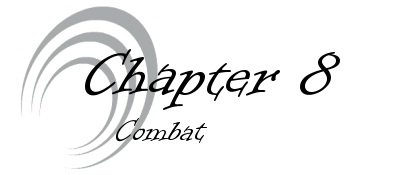Journey Combat: Hit Points
In 3.5, low-level combat is too swingy - one solid crit means you're pretty much dead. This is a little ridiculous, clearly.
Contents
Starting Hit Points
At first level, you have hit points equal to your Constitution + your max hit points from your class.
Your consitution modifier is not used for hit points anymore, but instead for "healing surges" (we need a different name for this).
At each level, your class gives you some number of hit points. Rather than d20's style of a straight die, we take what would be your hit die, halve it, and add half the original.
TABLE: TRANSLATING d20 to JOURNEY HIT DICE d20 Journey d12 d6+6 d10 d6+4 d8 d4+4 d6 d4+2 d4 d2+2
Healing Surges and the Second Wind
You have a number of healing surges equal to your Constitution modifier + a number dependent upon your hit die. You do not gain more healing surges by leveling. It is wholly dependent upon your Con score.
TABLE: HEALING SURGES (by d20 HD) HD SURGES d12 10 + Con mod d10 9 + Con mod d8 8 + Con mod d6 7 + Con mod d4 6 + Con mod
Healing surges have a hit point value equal to 25% of your hit points, rounded up. Effects that heal you will expend one of your healing surges, and the healing you gain is based off of your hit points, rather than what the healer can heal. This is more sensical: in d20, a cleric can heal 1d8+1 damage with a single spell, which will most likely completely heal a wizard, but can't possibly bring a barbarian or fighter that's almost down back to full; this is clearly ridiculous.
Healing surges are restored after an extended rest, which is six hours of resting. You can only gain the benefits of an extended rest once per day.
The Second Wind
Once per encounter, as a standard action, you can gain a second wind. This uses up one of your healing surges, so if you don't have any remaining, you cannot use a second wind. The second wind restores hit points equal to your healing surge value; in addition, you get a +2 bonus to all Defense rolls until your next action.
Damage
As discussed in the trauma page, there are several conditions you can gain while being hurt. All of these percentages are based off of hit points. Round in the method that is most beneficial to the character: if you have 59 hit points, you are bloodied at 29, wounded at 15, swooned at 0, and dead at 15.
50%: Bloodied. If you are bloodied, you suffer no ill effects. Some abilities are keyed off of this condition. 25%: Wounded. If you are wounded, you suffer a -2 penalty to all combat-related d20 rolls. 0%: Swooned. If you are swooned, you are unconscious and dying. -25%: Dead. You are dead.
Some class features or other abilities may play with these numbers. For instance, Rock-type classes may have access to a talent tree that makes them die at -50% HP, rather than -25%.
Swooned and Dying
While you are swooned, you can take no actions. Each time your action comes up, roll a d20.
1: You get much worse. You gain a death token, and lose a healing surge. If you have no remaining healing surges, gain two death tokens instead. 2 - 10: You get worse. You gain a death token. 11 - 19: You don't get worse, but you don't get better. 20: You stabilize. You lose all death tokens and no longer need to roll on this table.
If you have three death tokens, you die.
If you are dying, your ATB increase is +20, straight up.
